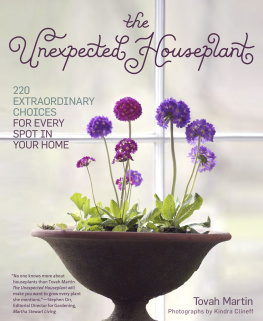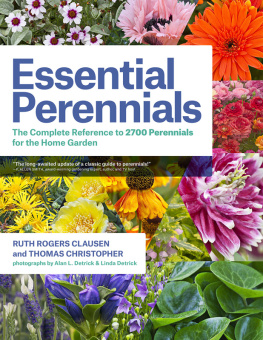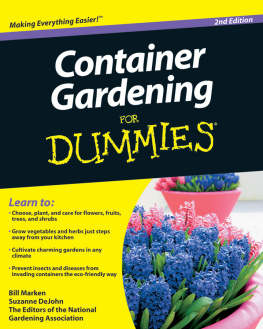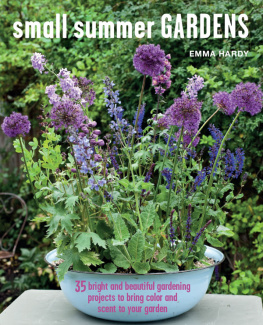GREEN FLOWERS


GREEN FLOWERS
Unexpected Beauty for the Garden, Container or Vase
Alison Hoblyn
Photographs by
Marie OHara

Dedicated to Anne Metcalfe
Page 1
Tulipa Spring Green
Frontispiece
Hermodactylus tuberosus
Grateful acknowledgement is given to Eric Glass Ltd for permission to reproduce a passage from Beverley Nicholss Forty Favourite Flowers, published in the UK by Studio Vista in 1964.
Copyright 2009 by Anne Metcalfe, Alison Hoblyn and Marie OHara. All rights reserved.
Published in 2009 by Timber Press, Inc.
The Haseltine Building
133 S.W. Second Avenue, Suite 450
Portland, Oregon 97204-3527
www.timberpress.com | 2 The Quadrant
135 Salusbury Road
London NW6 6RJ
www.timberpress.co.uk |
Designed by Dick Malt
Printed in China
Library of Congress Cataloging-in-Publication Data
Hoblyn, Alison.
Green flowers : Unexpected Beauty for the Garden, Container or Vase / Alison Hoblyn ;
photographs by Marie OHara.
p. cm.
Includes index.
ISBN 978-0-88192-919-5
1. PerennialsUnited States. 2. Ornamental treesUnited States. 3. IvyUnited States. 4. HerbsUnited States. I. OHara, Marie, photographer. II. Title.
SB434.H63 2009
635.9dc22
2008041891
A catalogue record for this book is also available from the British Library.
Contents

Introduction
Simple and sophisticated, mysterious and elegant: green is beautiful.
Anne Metcalfe
Opposite
Galtonia viridiflora
As a painter and a gardener, I have always appreciated green for its neutral and restful qualities. On the colour wheel, it occupies that middle land between the hot hues of red and the colder climes of blue. Within the realm of green, there is such great diversity; greens that tend towards blue can be jade or viridian, while those that have more than a dash of yellow in their mix can be parrot-green or lime or chartreuse. Dirty up the mix with a little black to give a greyer green and you may find celadon. Add a little red and green warms up, lilting towards brown.
Then there is tone to consider. Each of those hues can be darker or palerimagine diluting lime cordial with waterand then the colour takes on another characteristic altogether. Now relate that to a plant with its own unique form and texturethink of Angelica archangelica or Hacquetia epipactissitting in a place with varied light and shade, and you can see how using green in the garden can never be an exact science! Colour is always affected by its context; if light reflects from a brightly coloured flower, it will subtly change the hue of its neighbour.
And it may be difficult to tell where green ends and another colour begins. Take an outer petal of Clematis florida Plenawhich, objectively, is whiteand place it on a piece of snow-white cartridge paper; you will perceive a green-greyness in it. Look at a petal of Tulipa Spring Green and the dash of green running down the middle of the flower petal makes the rest of it look white, until closer inspection reveals this white to be a pale shade of yellow.
Naturally, when one thinks of green in horticulture, one thinks of foliageand there is plenty of that to choose from, in leaf form and colour. What this book aims to introduce are the extraordinary plants that have green flowersor at least what will pass for a green flower to the gardeners eye. In some cases the bloom is actually made of bracts or modified leaves but, for all intents and purposes, it creates the effect of a flower.
The green colour of plants is produced by chlorophyll, a molecule that is key in converting light into energy that the plant draws upon in order to grow. Simply, it is a kind of solar power cell that happens to be green. Displaying pink, orange or purple flowers is how many plants call out to pollinators, but many of the flowers in this book are green because they dont have to flaunt themselves. They have no need for loud colour to attract insects or birds to spread their pollen, as they either propagate through asexual reproduction (like Alchemilla conjuncta), or use the wind to do their meeting and greeting. What I find unique about green flowers is this humility; it is as if they dont feel the need to engage in a great show, but require a different kind of appreciation from the world.
In the absence of flashy hues, the diverse shapes and structures of green-flowered plants come to the fore. The fans of hairy, hand-like flowers of Anigozanthos flavidus, the four teardrop-shaped, paper-like bracts that mimic petals on the Kousa dogwood, and the fluffy green flowers that adorn the slender stems of the grass Setaria viridis represent only a fraction of the striking, often highly sculptural forms that they take.
I choose green in a planting scheme for many reasons. For one, it makes a marvellous bridge between more loudly coloured plants; the blue-green foliage and silvery green flowerheads of Echinops sphaerocephalus makes an interesting structured companion to both blue delphiniums and yellow Achillea Moonshine. It provides a kind of comma, somewhere to rest the eye between stimulating and opposing coloured areas. The underlying blue tone of the glaucous foliage harmonizes with the delphinium flower and is complementary to the yellow achillea, while the paleness of the frosted green flowerhead works well with the lightness of tone of A. Moonshine. Whereas the blue-green is used here to make peace, there is nothing more wonderful than the almost conflicting sparkiness of fabulous bright acid-green Euphorbia characias set against dark burgundy-black Queen of the Night tulips.
Imagine this combination brought into the house in a flower arrangement where the effect will be even more striking. Green is the flower-arrangers friend, helping to show off complementary reds and pinks or harmonizing with yellows and blues. But it need not be just a background player; with all the green flowers in this book there is ample scope to produce a stunning, green-dominated arrangement that concentrates on shade, tone and structure.
I enjoy using greens together, without other colours; an all-green planting gives an opportunity not to be distracted by showy hues and instead look hard at the form of the plant. And that is what gardeners like to do: to look, to take some precious moments to appreciate something that will last just a short while. Close scrutiny of some of the tinier examples in this book, like Jovibarba heuffelii Bloodstone or Mitella breweri, will be repaid with that rare sensation: a feeling of wonder. Browsing the gallery of photographs is a good way to begin appreciating the perfection of their intricate forms.
The colour green has so many associations. It is not only applied as a descriptor of colour but also conjures strong feelingsof envy and nausea, maybe. To some it means new beginnings, while for others it is alternately lucky or unlucky. The word has been hijacked politically to evoke an altogether worthy notion of eco-friendliness. Rather remarkably, exposure to the colour green has been found to slow the heart rate and lower blood pressureand above all, it is the colour of nature, associated with creation. With all these images attached to one simple wordgreenIve tried to provide as objective a colour description of these plants as possible. In the following pages you will find a wealth of plants to choose from, ranging from houseplants to trees. I hope this will give you a thought-provoking and useful palette of flowering greens to enjoy in the house and the garden all year round.
Next page









